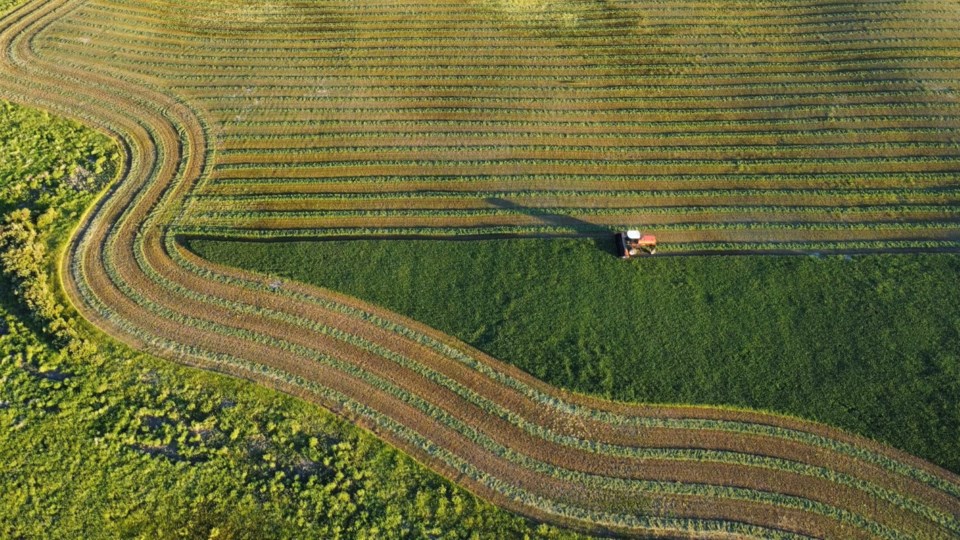REGINA — Harvest has progressed quickly throughout most of the province over the past week. Currently, 42 per cent of the 2024 crop has been harvested, which is up from the 25 per cent reported last week.
This is ahead of the five-year average of 34 per cent and the 10-year average of 31 per cent. Producers are hopeful for favourable weather to further advance harvest operations throughout the province in the coming weeks
The 小蓝视频west region continues to lead harvest operations with 73 per cent of this year's crop harvested. The 小蓝视频east region has 47 per cent of the crop in the bin, followed by the East-central region at 38 per cent and the west-central region at 31 per cent. The Northeast currently has 22 per cent harvested and the Northwest region sits at 19 per cent harvested.
Winter cereals are nearing completion with 94 per cent of fall rye and 93 per cent of winter wheat harvested. Pulse crops have also substantially increased in harvest completion with 92 per cent of lentils and 90 per cent of field peas harvested. Of the cereal crops, durum is the furthest ahead in harvest progress at 63 per cent, followed by barley at 52 per cent and oats at 32 per cent. Spring wheat currently sits at 28 per cent harvested across the province and canary seed sits at 19 per cent. Mustard is the furthest advanced at 63 per cent harvested for oilseed crops, followed by canola at 16 per cent and flax at eight per cent.
The range in growing conditions across the province has caused varying yield estimates reported for all crop types. Regionally, producers also indicate large variations in yield from field to field due to the scattered rainfall amounts received throughout the growing season. The current estimated averages of crop yields are 45 bushels per acre for hard red spring wheat, 33 bushels per acre for durum, 75 bushels per acre for oats, 63 bushels per acre for barley, 34 bushels per acre for canola, 36 bushels per acre for field peas and 1,317 pounds per acre for lentils. Throughout many regions of the province, crop yields and quality have been negatively impacted by the high temperatures that occurred through the critical stages of flowering combined with the dry conditions experienced in certain regions. Additionally, with the increased temperatures occurring through harvest, producers will need to monitor grain storage in the coming weeks.
Rainfall was variable throughout the province with many areas reporting reduced rainfall amounts over the past week apart from the West-central region which received the highest rainfall. The Marsden area reported the highest amount of rainfall for the week at 60 mm followed by the Neilburg area at 57 mm. The Macklin and Unity areas received 50 mm over the past week.
Topsoil moisture conditions are similar to those reported from last week. Currently, cropland topsoil moisture is rated as 40 per cent adequate, 38 per cent short and 22 per cent very short. Hayland is rated as 34 per cent adequate, 39 per cent short and 27 per cent very short. Pasture topsoil moisture is rated as 23 per cent adequate, 40 per cent short and 37 per cent very short. Producers are hopeful for rain following harvest to help replenish soil moisture conditions and mitigate further fire risk.
Crop damage reported over the past week was mainly due to wind and migratory birds. Crop lodging has caused some challenges for producers while combining. Minor damage was also reported from hail and grasshoppers in some regions of the province.
As producers continue with combining, swathing, desiccating, baling straw and hauling bales, they are reminded to exercise caution and remain safe in all the work that they do. Fire risk remains high in many areas due to the drier conditions. Additionally, motorists are asked to remain vigilant and exercise patience when travelling around or near farm equipment on the highway.



